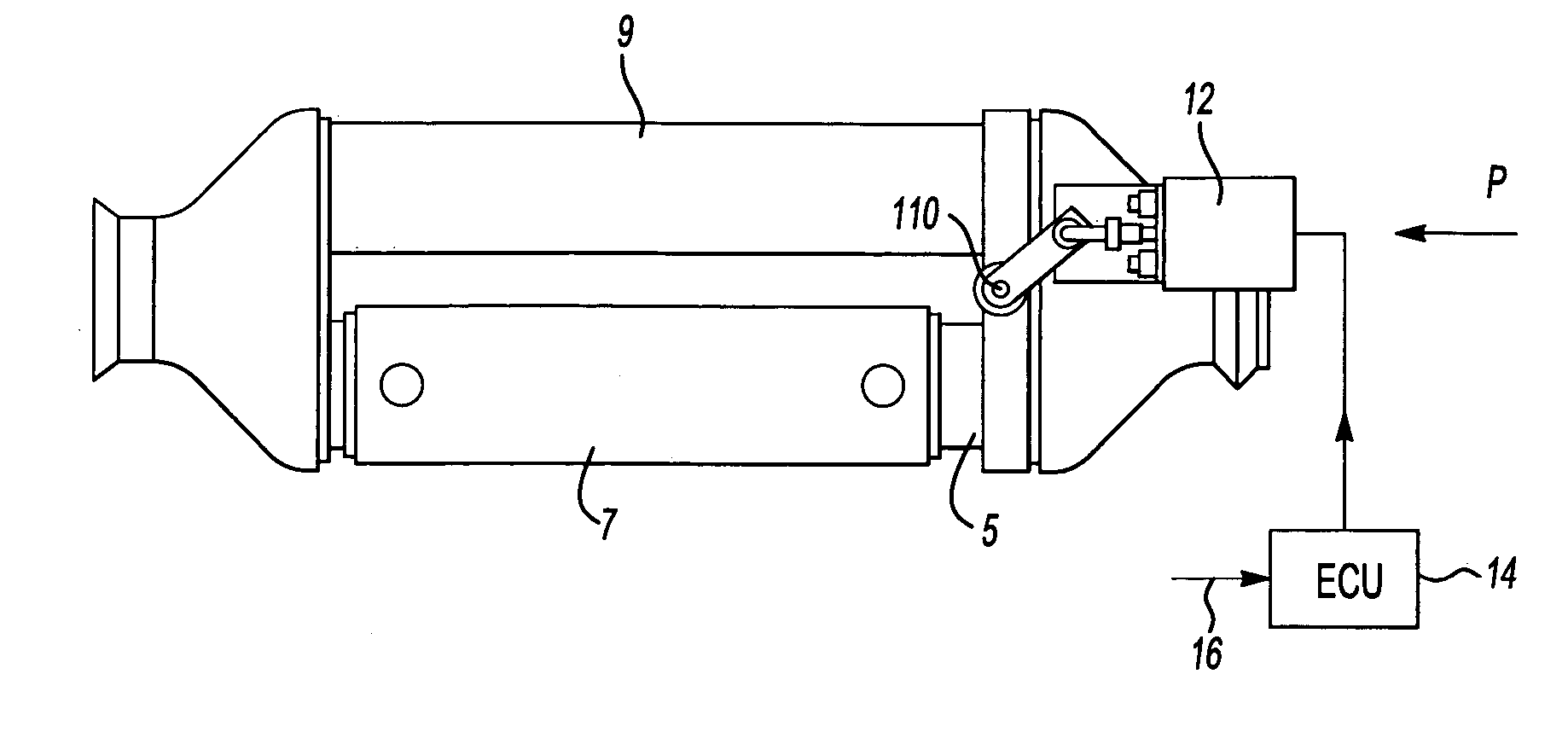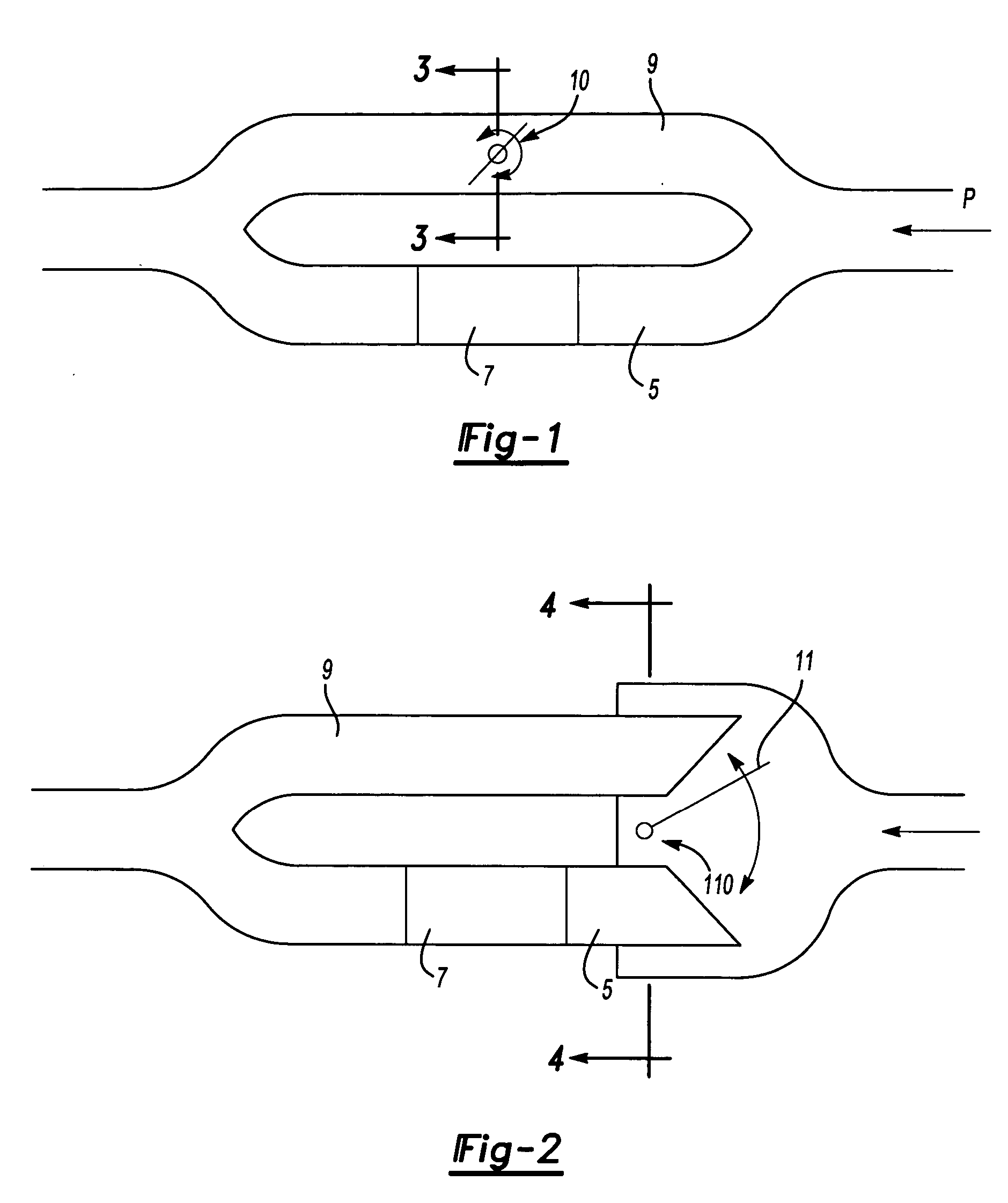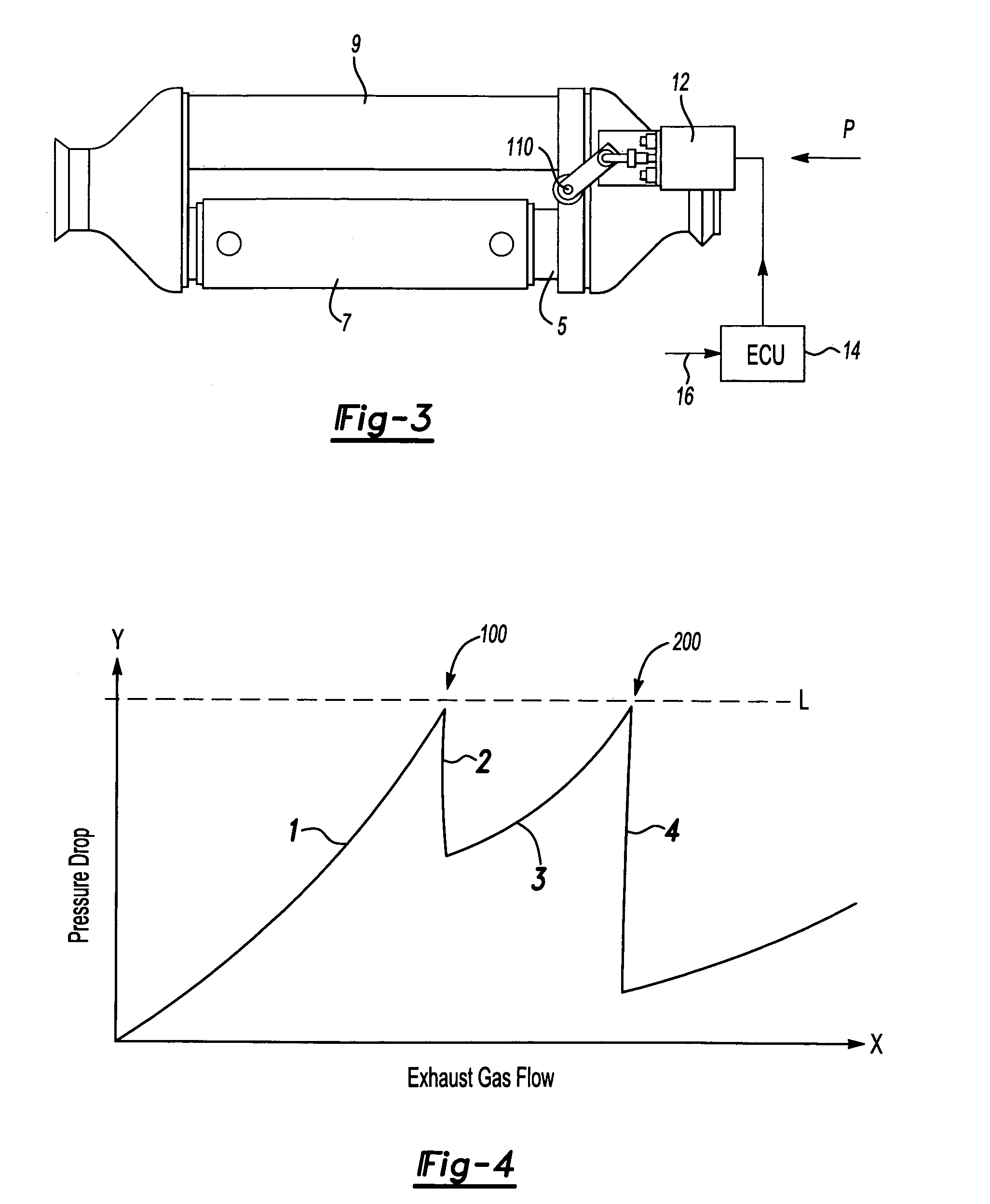Method for controlling a valve for an exhaust system
a technology of exhaust system and valve, which is applied in the direction of fluid pressure control, lighting and heating apparatus, instruments, etc., can solve the problems of reducing the heating performance of the heating system, pressure drop, and uncomfortable for the occupants of the vehicle, so as to reduce the pressure drop and reduce the pressure drop across the heat exchanger system
- Summary
- Abstract
- Description
- Claims
- Application Information
AI Technical Summary
Benefits of technology
Problems solved by technology
Method used
Image
Examples
Embodiment Construction
[0015] Two embodiments of heat exchanger units employed in auxiliary heating systems are now described with reference to FIGS. 1 and 2. In both systems, the exhaust gas of a combustion engine (not depicted) enters in the direction of arrow P from the right side with respect to the drawings. The system has a heat exchanger duct 5 with a heat exchanger 7 for the exhaust gas, and a bypass duct 9. A valve 10 is used to control the flow of the exhaust gas through heat exchanger duct 5 and bypass duct 9.
[0016] In the embodiment of FIG. 1, the proportion of the gas flow through the ducts is controlled by varying the flow resistance of bypass duct 9. When valve 10 is in a completely opened position, the flow resistance of bypass duct 9 is significantly less than the flow resistance of heat exchanger 7 in heat exchanger duct 5, resulting in almost no gas flow through the heat exchanger 7. When valve 10 is in a completely closed position, the gas flow through bypass duct 9 is blocked, and th...
PUM
 Login to View More
Login to View More Abstract
Description
Claims
Application Information
 Login to View More
Login to View More - R&D
- Intellectual Property
- Life Sciences
- Materials
- Tech Scout
- Unparalleled Data Quality
- Higher Quality Content
- 60% Fewer Hallucinations
Browse by: Latest US Patents, China's latest patents, Technical Efficacy Thesaurus, Application Domain, Technology Topic, Popular Technical Reports.
© 2025 PatSnap. All rights reserved.Legal|Privacy policy|Modern Slavery Act Transparency Statement|Sitemap|About US| Contact US: help@patsnap.com



